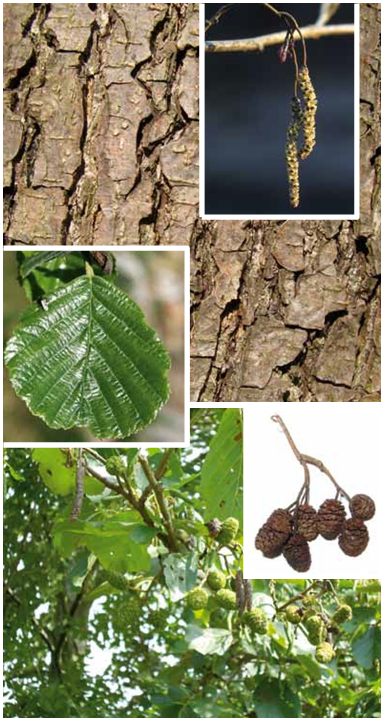Alnus glutinosa

Alnus glutinosa
Alänter, Eller
Schwarz-Erle
Black Alder
Aulne noir
Aulne glutineux
Size:
Alders become large trees up to 25 m and have a typical conical to ovoid crown. They rarely grow older than 150 years.
Leaf:
The leaf is roundish or obovate. The notched (or missing) leaf tip is a sure sign of recognition.
Flower/Fruit:
The inconspicuous flowers of the alder are pollinated by the wind. The male flower forms pendulous catkins, while the female catkins are erect. They flower very early, as early as March. In the course of ripening, the fruiting stem becomes woody and - unusually for deciduous shrubs - turns into a cone.
Wood:
Alder wood is often used as solid wood in cabinet making, the veneer has a fine grain. Alder wood can be used in water almost indefinitely, it was used in the past in mills, mines and for water pipes.
Trivia/Use:
Black alders have an intense root system that reaches below the waterline along bodies of water. This makes them ideal for fortifying the banks of streams and rivers. Since the air supply in the water cannot take place via the roots, it is ensured via openings in the bark and air channels in the wood. With the help of a symbiosis with ray fungi in the soil, alders can obtain the nitrogen from the air. In this way, they thrive even in the poorest soils.



